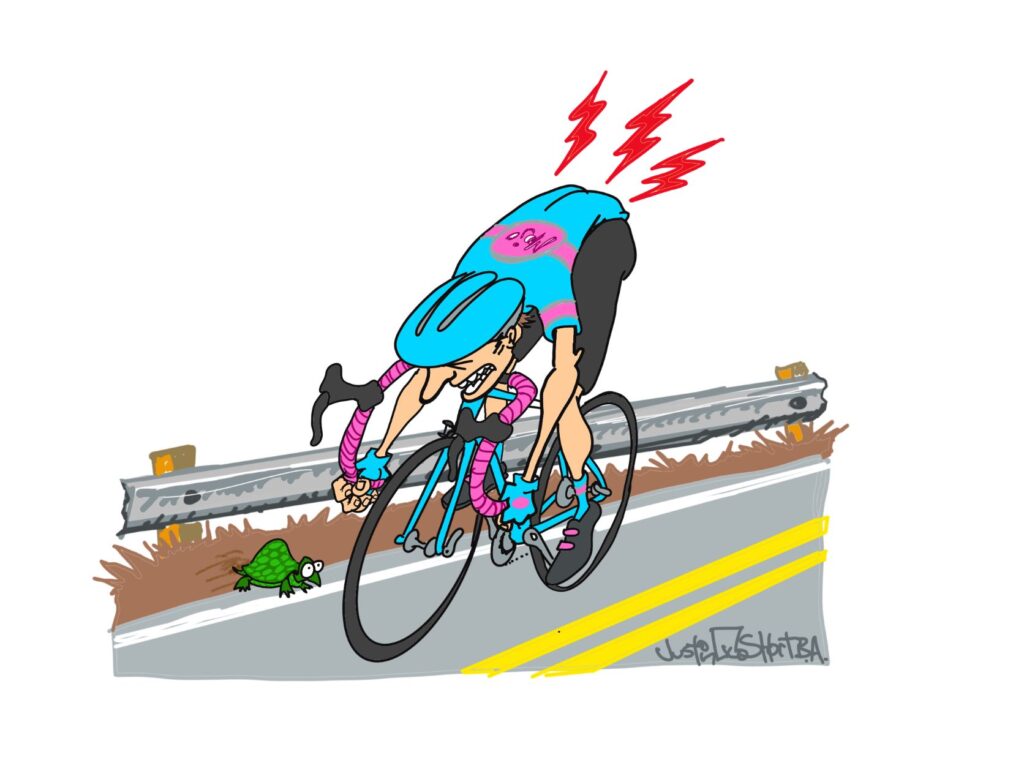Bike fitting is a curious animal. Sometimes a bike will fit like a glove right out of the box; sometimes it doesn’t. Other times you may find that the bike fits well but then discover when you’re far away from home that you’re sitting on a medieval torture device.
Maybe your rump is fine, but your wrists are killing you, or your neck, or a knee. Hopefully this article helps you decide if and what level of bike fit you need for pain-free pedaling.
In the long-gone days of my youth, the proper fit on a BMX bike was the simple matter of adjusting the wheelbase and handlebar reach to facilitate better wheelies. Too long and the front wheel wouldn’t come up. Too short and you fell off the back. Striking that balance became particularly important the more time I spent off the ground.
In my early 20s I got my first road bike. I wondered why it felt like I was holding onto the front axle. I really needed eyeballs on the top of my forehead to see the road ahead at that angle, but I was young and my thirst for adventure was stronger than my dislike of the discomfort I experienced.
My second road bike, a 1981 predecessor of the modern adventure gravel bike, magically fit like the aforementioned proverbial glove. After that bike disintegrated, I spent more than a decade trying to recreate that fit on other bikes.

Over the years I was riding less and less, so the perfect fit didn’t matter as much, until Thomas Yeates of The Bike Hub talked me into racing the 700-mile Cross-Washington Mountain Bike Route. I immediately booked a level 3 fit with Brice Erickson at B&L Bicycles in Pullman, Wash.
As Bike Fit Sam, owner of Ambassador Cycling on the South Hill in Spokane, Wash., says, “Cycling is a perceived low-impact activity, but it’s repetitive. If something is off in your fit, you can create an overuse injury or blow something out.”
I now schedule a fit check-up every year with Bike Fit Sam as the riding season ramps up into the absurd ultra bikepacking events that have captured my imagination in recent years. And so far I’m still relatively comfortable after 36 straight hours of riding.
“Not everyone needs a pro fit,” says Sam. “A bike shop will get you close, and that’s good enough for most people.”
Proper bike fit matters: Here are 5 reasons to know it’s time to schedule an appointment with a pro bike fitters.
1. Pain: Even if you don’t have acute pain, you don’t know how much better cycling can be if it actually feels good to sit on your bike.
2. Post-injury: Your fit can be modified to take the load off of a joint or appendage.
3. Injury prevention: If you’ve signed up for your first Iron Man or century, or anything beyond your normal scope of riding endurance, it becomes more important to have your fit dialed in.
4. Reduced activity/fitness: It’s normal for experienced riders to make small adjustments as their fitness fluctuates throughout the season. So chances are that bike that’s been collecting dust in the back of the garage for 15 years will get a signed confession out of you if you spend enough time on it.
5. New bike: Possibly the best reason for a bike fit. Your fitter will probably be as excited as you are.
The best advice is to ride your bike and feel it out. If your bike doesn’t feel like an extension of your body, maybe consider an appointment with a pro bike fitter near you.
In Spokane, check out Ambassador Cycling, Brice at B&L, Katrina Vogel, or Paul Sharp, just to name a few. Your friendly neighborhood Inland NW bike nut probably knows them.
Justin Short got his annual bike fit checkup with Ambassador Cycling in preparation for the 350-mile Odyssey of the VOG bikepacking race out of Salem, Ore., in late May. He will probably ride the thing straight through, unless he comes to his senses.
Find more stories about biking in the OTO archives and Everyday Cyclist column.













